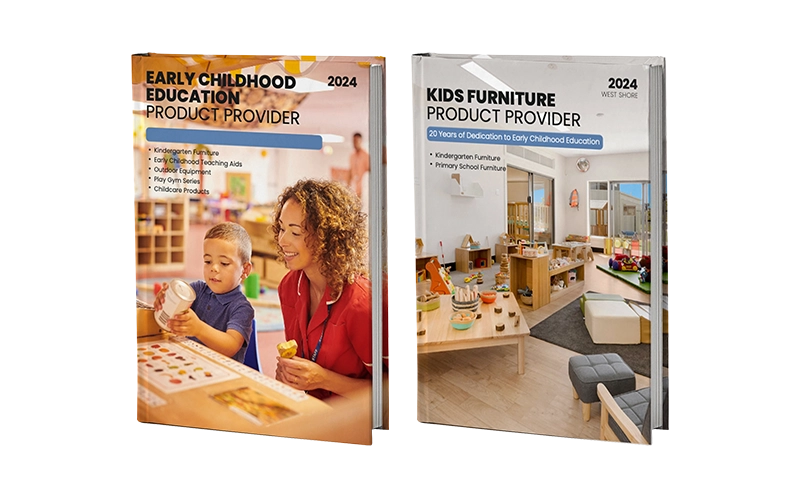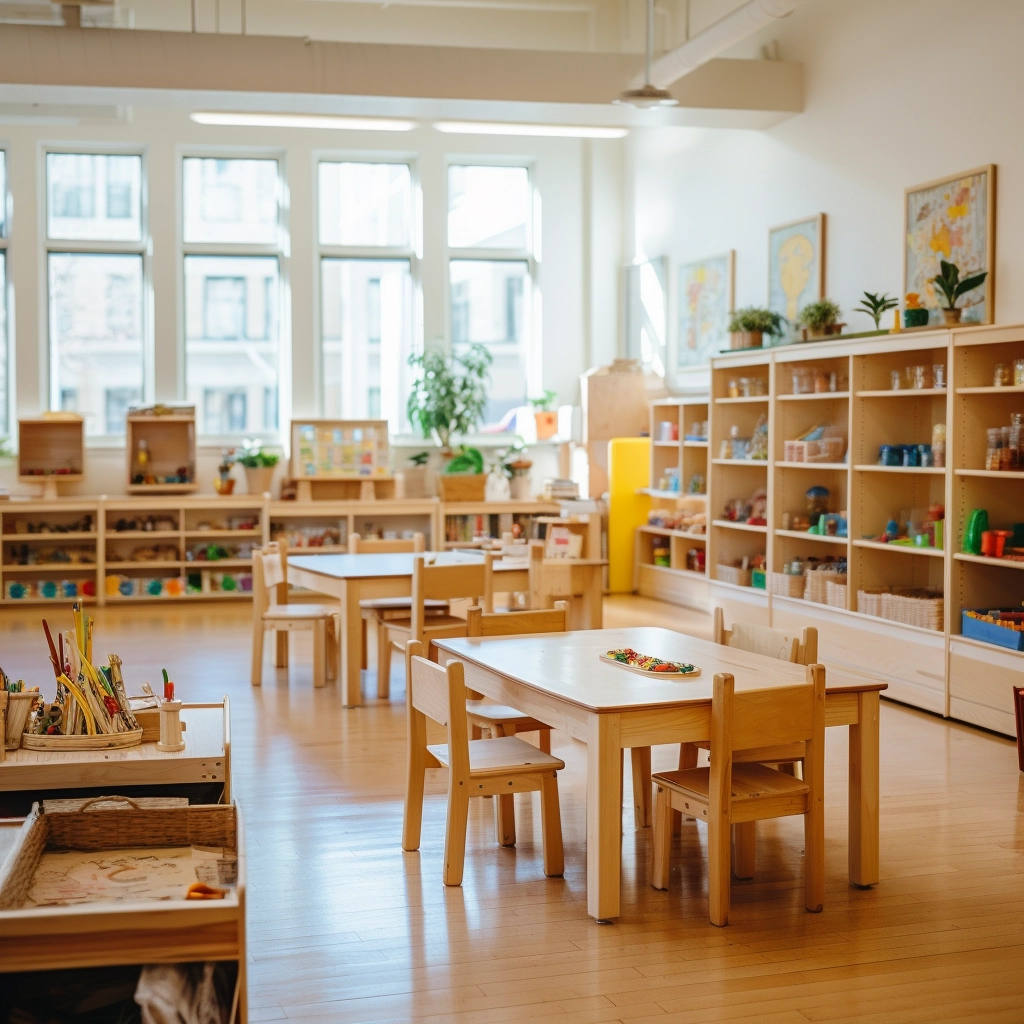Are your preschoolers constantly buzzing with energy, yet struggling to stay focused and feel a sense of belonging? Do you find yourself repeating the same classroom rules, feeling like a one-person show? Without meanAre your preschoolers constantly buzzing with energy, yet struggling to stay focused and feel a sense of belonging? Do you find yourself repeating the same classroom rules, feeling like a one-person show? Without a clear system of preschool classroom jobs, young children may miss out on vital growth opportunities in both independence and collaboration.
Preschool classroom jobs offer children far more than a chance to tidy up the room—they provide real opportunities to build essential life skills. Through consistent participation in classroom roles, children learn responsibility, develop independence, and gain a sense of ownership in their environment. These experiences foster emotional security, improve focus, and promote social development by helping each child feel like a valuable member of the group.
In this article, I’ll walk you through 50 exciting preschool classroom jobs that transform routine into empowerment, teaching kids real-life skills while fostering a warm, cooperative community.
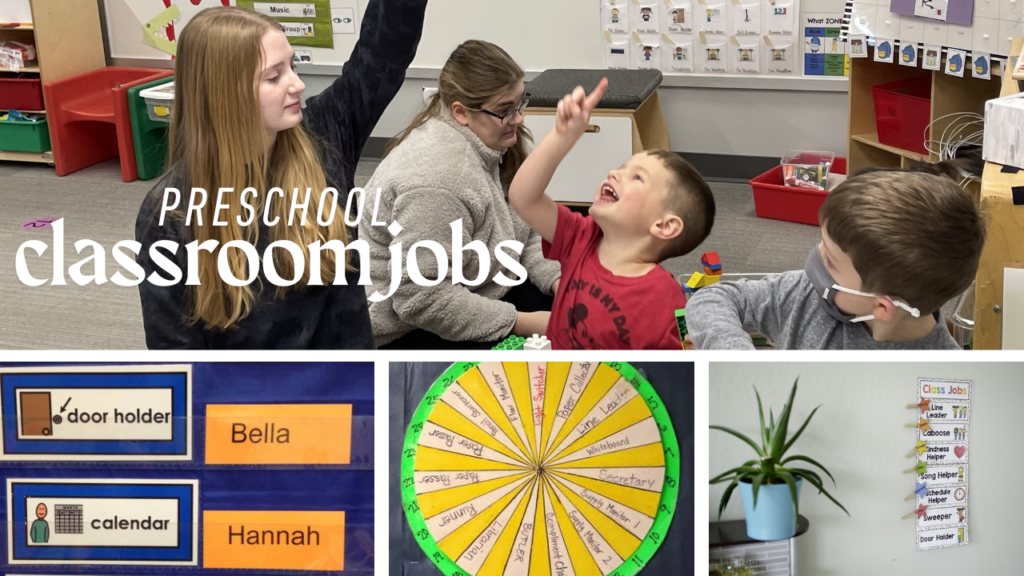
What Are Preschool Classroom Jobs?
Preschool classroom jobs are specific, developmentally appropriate responsibilities assigned to young learners in a classroom setting. These “jobs” might seem simple—like handing out napkins, turning off lights, or holding the door—but to a preschooler, they are much more. They are opportunities to lead, participate, and contribute meaningfully to their small community. Whether you’re working in a Montessori setting, a Reggio Emilia-inspired school, or a traditional preschool environment, integrating classroom jobs is one of the most effective classroom management strategies you can use.
These jobs for preschool classroom environments help children feel included and important. They provide structure and purpose during the day, which is essential for early childhood development. Tasks are typically rotated on a daily or weekly basis, often using a preschool job chart or classroom duty chart, so every child gets a chance to try out different responsibilities.
Additionally, these jobs are often the foundation of classroom routines. For instance, having a “Weather Reporter” during circle time, or a “Line Leader” when heading outside for recess, helps establish predictable, comforting transitions while developing communication and memory skills. These jobs are more than symbolic; they are intentional, purposeful tools for teaching and nurturing growth.

Why Are Preschool Classroom Jobs Important?
In early childhood education, structure, responsibility, and social interaction form the foundation of a well-functioning learning environment. Preschool classroom jobs are not simply routine activities—they are an intentional pedagogical strategy that supports developmental goals across cognitive, social, emotional, and behavioral domains. When applied systematically, classroom jobs contribute to a classroom culture rooted in collaboration, consistency, and empowerment.
Support for Social-Emotional Development
One of the most critical objectives in early childhood education is to foster children’s emotional security and sense of belonging. When educators implement preschool classroom jobs for preschoolers, they establish consistent opportunities for each child to participate in the shared operation of the learning environment. This cultivates a child’s identity as a valued member of the classroom community.
Furthermore, assigning preschool classroom jobs encourages the development of self-efficacy. Children begin to associate effort with outcome, which builds self-confidence and intrinsic motivation. These emotional competencies are foundational for later academic resilience and interpersonal skills, making classroom roles an essential element in daily routines.
Facilitation of Cognitive Skill-Building
The introduction of preschool classroom jobs aligns closely with the development of executive functioning. Roles that require sequential steps, memory recall, and time-awareness promote skills such as task initiation, working memory, and attention control—critical abilities in both academic and real-world contexts.
Additionally, when tools like preschool job charts or classroom duty charts are used consistently, they serve as visual and cognitive anchors. These resources promote pattern recognition, categorization, and symbolic understanding. Children begin to grasp abstract concepts like fairness, role responsibility, and group contribution through real-world practice of preschool classroom jobs.
Operational Efficiency and Predictability in Classroom Management
From the educator’s perspective, a structured system of preschool classroom jobs significantly enhances classroom management. When roles are clearly defined and consistently implemented through a visual classroom job chart, both children and teachers benefit from a more predictable and organized daily routine.
With clearly assigned classroom jobs, preschoolers internalize expectations, which leads to fewer behavioral disruptions. Teachers, in turn, can redirect their focus toward instruction and individualized support. In multi-age or high-ratio environments, student participation in preschool classroom jobs lightens the educator’s operational burden and promotes smooth transitions throughout the day.
Alignment with Curriculum and Educational Frameworks
Many early childhood pedagogical frameworks—such as Montessori, Reggio Emilia, and inquiry-based learning—emphasize the importance of purposeful work, environmental responsibility, and child-led participation. Implementing preschool classroom jobs is a natural and effective extension of these philosophies.
In curriculum design, preschool classroom jobs can be directly linked to developmental standards in social-emotional learning, citizenship, and practical life skills. With thoughtful scaffolding, these classroom responsibilities support observation-based assessment. Teachers can evaluate a child’s problem-solving ability, self-regulation, and cooperative behavior simply by watching how they engage with their assigned job. This makes preschool classroom jobs not only a classroom management tool but also a pedagogical instrument for holistic child development.
พร้อมที่จะออกแบบพื้นที่ที่สร้างแรงบันดาลใจในการเรียนรู้หรือยัง ติดต่อเราเพื่อสร้างโซลูชันเฟอร์นิเจอร์ที่ปรับแต่งให้เหมาะกับความต้องการในห้องเรียนของคุณ
50 Preschool Classroom Jobs to Empower Young Learners
Introducing structured, purposeful roles into your preschool or kindergarten classroom can dramatically improve organization, engagement, and social-emotional learning. The following 50 preschool classroom jobs are designed to be developmentally appropriate, scalable, and adaptable to a wide range of educational philosophies.
To help educators and administrators implement these roles efficiently, I’ve grouped them into six categories based on core classroom functions: environmental care, peer support, academic routines, classroom maintenance, transitions, leadership & and memorable roles.
Category A: Environmental Care Roles
1. Plant Caretaker
The Plant Caretaker ensures that all classroom plants are healthy and watered regularly. This job encourages children to observe living things, be consistent with care routines, and understand natural life cycles. It also reinforces environmental responsibility and gentle, purposeful action.
2. Animal Helper
The Animal Helper is in charge of feeding, observing, or cleaning up after the classroom pet, under teacher supervision. This job teaches empathy, responsibility, and respect for other living creatures. It also promotes routine awareness and following safety instructions.
3. Recycling Monitor
The Recycling Monitor helps ensure all paper, bottles, and recyclables go into the proper bins. This role fosters environmental awareness, classification skills, and an early understanding of sustainability. It also provides a tangible way for children to care for their community.
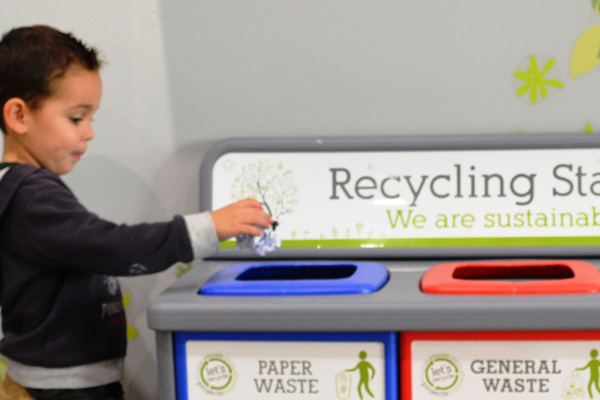
4. Light Manager
The Light Manager turns classroom lights on and off at designated times, such as arrival, circle time, or dismissal. This job introduces concepts of energy conservation and routine transitions. It helps preschoolers understand the value of shared resources and timing.
5. Energy Saver
The Energy Saver double-checks that classroom devices like fans, tablets, or projectors are turned off when not in use. This role supports self-regulation, environmental mindfulness, and developing a sense of shared responsibility for classroom tools and equipment.
6. Materials Organizer
The Materials Organizer ensures that learning materials—such as blocks, puzzles, and manipulatives—are returned to their proper places. This job promotes categorization, orderliness, and spatial organization. It also supports independent learning and shared accountability.
7. Sanitizer Assistant
The Sanitizer Assistant helps distribute hand wipes or sanitizer before meals or after messy activities. This job reinforces hygiene habits, self-care awareness, and health safety practices in a group setting. It is especially relevant in promoting public health consciousness.

8. Table Wiper
The Table Wiper helps keep the classroom tables clean by wiping them before or after snack, art, or sensory play. This job encourages pride in shared spaces, responsibility for group environments, and fine motor skill development through practical action.
9. Trash Collector
The Trash Collector assists the teacher in making sure trash is put into proper bins and the area is tidy at the end of the day. This position encourages follow-through, cleanliness, and the understanding that everyone contributes to classroom upkeep.
10. Window Watcher
The Window Watcher is responsible for checking that windows are closed adequately during transitions and helping observe changes in the outdoor environment. This task blends responsibility with scientific observation and supports routines related to classroom safety and weather awareness.
Category B: Peer Support and Social Responsibility Roles
11. Friendship Buddy
The Friendship Buddy helps classmates feel included by offering support to those who are sad, new, or in need of a friend. This role nurtures empathy, compassion, and prosocial behavior, laying a foundation for emotional intelligence and peer connection.
12. Morning Greeter
The Morning Greeter stands near the entrance and offers cheerful greetings to classmates as they arrive. This role promotes social interaction, positive peer engagement, and a warm, welcoming classroom atmosphere, setting the tone for a connected learning environment.
13. Peacekeeper
The Peacekeeper assists in minor conflict resolution by reminding peers to use kind words and calm voices. This position encourages communication, emotional regulation, and responsibility in maintaining a respectful and inclusive classroom culture.
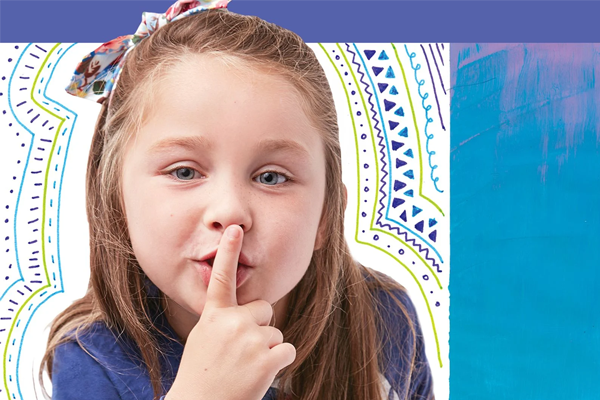
14. Library Organizer
The Library Organizer ensures that all classroom books are returned to their correct bookshelf or basket after use. This task promotes respect for materials, visual categorization, and ownership of shared learning spaces—essential components of a literacy-rich environment.
15. Pencil Sharpening Assistant
The Pencil Sharpening Assistant checks that pencils at each station are sharpened and ready for use at the beginning of the day. This job promotes fine motor coordination, practical life skills, and support for academic preparedness within the group.
16. Cubbie Monitor
The Cubbie Monitor helps ensure that cubbies and personal storage areas are tidy and organized. This role promotes respect for personal space, responsibility for one’s belongings, and an understanding of classroom order and self-management.
17. Weather Watcher
The Weather Watcher observes the outdoor weather each morning and reports it during circle time. This position builds observation skills, early science awareness, and verbal expression while contributing to group discussions and calendar routines.
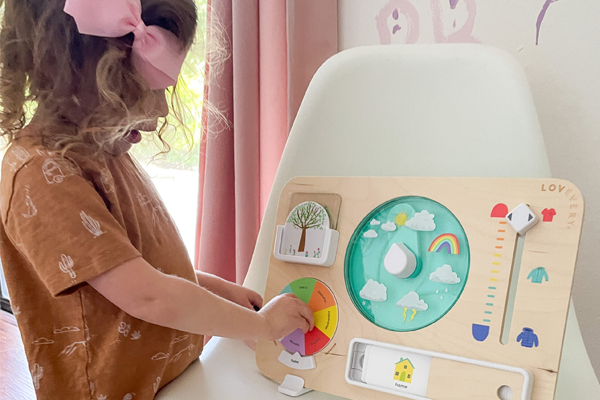
18. Kindness Recorder
The Kindness Recorder notices and shares examples of kind actions during group meetings or reflection times. This role supports positive reinforcement, community building, and values-based learning around respect, empathy, and helpfulness.
19. Feelings Reporter
The Feelings Reporter shares or helps identify emotions expressed by peers during the day using feeling charts or visual aids. This job strengthens emotional vocabulary, social awareness, and reflective thinking through nonjudgmental observation and guided conversation.
20. Encouragement Leader
The Encouragement Leader gives compliments or encouraging words to classmates during group work or transitions. This position builds self-esteem and mutual respect and cultivates an affirming classroom tone that supports psychological safety and collaborative learning.
Category C: Academic and Learning Routine Jobs
21. Calendar Keeper
The Calendar Keeper assists with updating the class calendar. They can mark special events, birthdays, or upcoming holidays to keep the class informed. This role supports time awareness, sequencing, and connection between classroom routines and real-life events.
22. Letter Leader
The Letter Leader helps introduce the letter of the day or week by pointing to it during morning circle or helping find words that start with that letter. This job strengthens phonemic awareness, alphabet knowledge, and active engagement in literacy routines.
23. Number Counter
The Number Counter leads the class in counting aloud during calendar time, attendance, or transitions. This role reinforces one-to-one correspondence, number recognition, and oral fluency—all essential early math foundations.

24. Storybook Assistant
The Storybook Assistant selects a story from the classroom library or helps the teacher prepare a read-aloud. This task nurtures decision-making, book-handling skills, and excitement for shared literacy experiences.
25. Line Leader
The Line Leader walks at the front of the line and helps set the pace when the class transitions from one area to another. This job encourages leadership, spatial awareness, and responsibility for group safety during movement.
26. Show-and-Tell Manager
The Show-and-Tell Manager helps organize and moderate this activity by introducing classmates or reminding others to listen and ask questions. This role supports public speaking skills, respectful listening, and classroom participation.
27. Board Cleaner
The Board Cleaner erases the whiteboard or chalkboard after circle time, lessons, or teacher instructions. This role promotes cleanliness, responsibility, and attention to detail in maintaining a shared learning space.
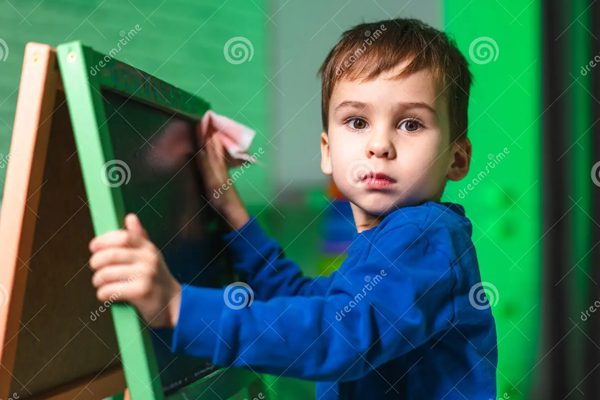
28. Circle Time Assistant
The Circle Time Assistant helps distribute materials (e.g., props, flashcards, visual aids) needed for morning meetings or group lessons. This job supports organizational skills and reinforces the importance of preparation in learning environments.
29. Rhyme Time Leader
The Rhyme Time Leader participates in phonological awareness activities by helping lead songs, chants, or rhyming games. This job enhances language rhythm, auditory discrimination, and confidence in group participation.
30. Learning Center Opener
The Learning Center Opener helps prepare and introduce materials for a specific learning station, such as art, science, or blocks. This role promotes ownership of learning spaces and reinforces the expectations and structure of independent work.
Category D: Classroom Maintenance & Daily Logistics
31. Snack Distributor
The Snack Distributor helps pass out snacks to classmates during designated break times. This role reinforces fairness, one-to-one correspondence, and fine motor skills, while also promoting healthy routines and group cooperation.
32. Chair Stacker
The Chair Stacker ensures that chairs are neatly pushed in or stacked at the end of the day or after specific activities. This job cultivates spatial awareness, orderliness, and consideration for shared physical space in the classroom.
33. Tray Carrier
The Tray Carrier assists in handing out or collecting trays, dishes, or supplies during mealtime or activities. This role fosters practical coordination, patience, and responsibility in group routines involving shared materials.
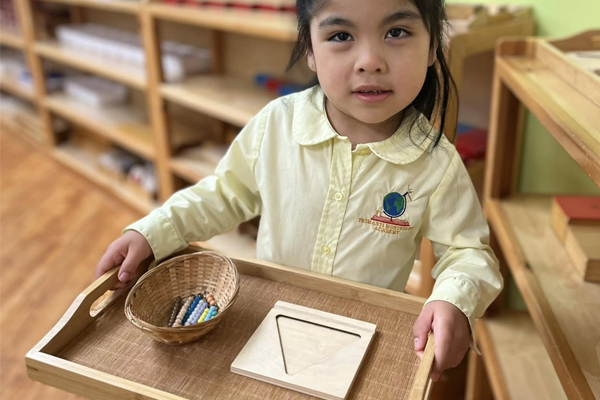
34. Nap Mat Roller
The Nap Mat Roller helps classmates roll up and store their mats after rest time. This task strengthens fine motor control, respect for personal belongings, and a sense of transition from rest to active learning.
35. Lunch Basket Carrier
The Lunch Basket Carrier helps carry lunch containers or class meal bins to the cafeteria or designated eating area. This role supports physical responsibility, cooperation with routines, and an understanding of meal-time structure.
36. Cleanup Timer
The Cleanup Timer announces when it’s time to begin or end cleanup using a timer, bell, or verbal prompt. This position teaches time-awareness, task management, and the importance of collective responsibility in resetting the space.
37. Water Monitor
The Water Monitor ensures that the classroom’s water station is stocked and cups are in place. This job instills hygiene awareness, practical responsibility, and environmental mindfulness in daily hydration routines.
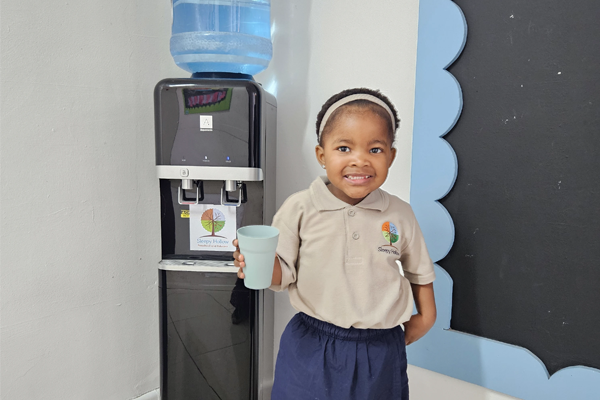
38. Art Supplies Assistant
The Art Supplies Assistant helps distribute and collect materials like crayons, glue, or paintbrushes during creative work. This position develops organizational skills, respect for tools, and attention to preparation and cleanup routines.
39. Paper Passer
The Paper Passer hands out worksheets, drawings, or take-home flyers. This job promotes fine motor development, task focus, and early executive functioning in handling materials with care and efficiency.
40. Supply Shelf Keeper
The Supply Shelf Keeper checks that classroom shelves remain tidy and supplies are returned to their proper place. This role reinforces categorization, orderliness, and independent problem-solving through real-world applications.
Category E: Transition, Leadership & Special Recognition Jobs
41. Door Holder
The Door Holder is responsible for holding the door open during transitions such as going outside, to lunch, or specials. This job builds physical self-control, awareness of others, and encourages courteous behavior in daily routines.
42. Line Caboose
The Line Caboose walks at the end of the line to ensure everyone stays together and no one gets left behind. This role teaches responsibility for peer safety, spatial awareness, and awareness of class unity during group movement.
43. Bell Ringer
The Bell Ringer uses a soft bell, chime, or signal (as approved by the teacher) to indicate cleanup time or transition to another activity. This position reinforces time management and introduces the child to shared responsibility in maintaining a routine.
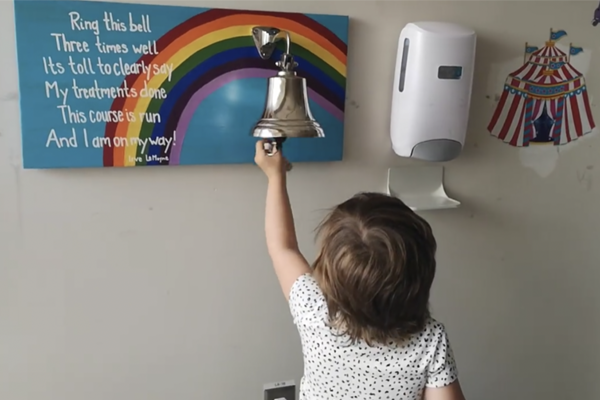
44. Hallway Monitor
The Hallway Monitor reminds classmates to use quiet voices, straight lines, and gentle walking while in hallways. This job encourages peer regulation, respectful behavior, and accountability in shared school-wide spaces.
45. Coat Monitor
The Coat Monitor assists peers in finding and putting on coats, especially during seasonal transitions. This role enhances social helpfulness, sequencing, and independence in preparation and dressing routines.
46. Backpack Manager
The Backpack Manager ensures that bags and personal items are neatly placed in designated areas at arrival or before dismissal. This role supports organization, personal responsibility, and end-of-day routine structure.
47. Birthday Assistant
The Birthday Assistant helps the teacher with birthday celebrations by setting up materials or leading class cheers. This job promotes empathy, shared joy, and respect for others’ special moments, enhancing community spirit.
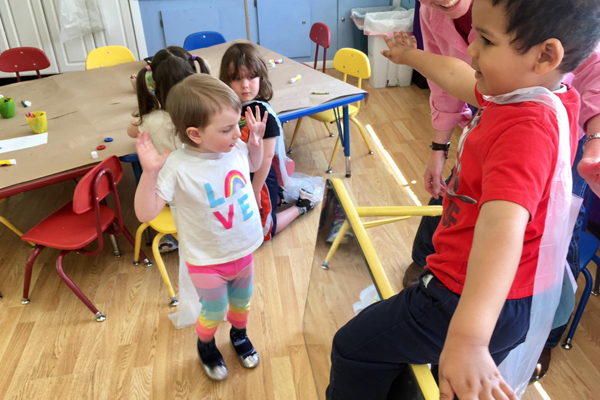
48. Star of the Week
The Star of the Week is a rotating role that celebrates one student with extra privileges such as sharing items, leading games, or having a special display. This position boosts confidence, self-expression, and identity within the classroom community.
49. Job Chart Helper
The Job Chart Helper assists the teacher in updating or rotating classroom jobs each week. This job introduces children to systems thinking, fairness, and decision-making, while increasing their understanding of community organization.
50. Class Photographer
The Class Photographer (with adult supervision) uses a child-safe camera to document classroom moments such as projects or events. This role supports creativity, perspective-taking, and observational skills while helping record shared memories.
How to Implement and Manage Preschool Classroom Jobs
Establishing a system for preschool classroom jobs requires more than just assigning children random tasks. It is a deliberate process that evolves from careful planning to consistent daily management. A well-designed system empowers young learners by fostering responsibility, supporting developmental goals, and improving classroom operations.
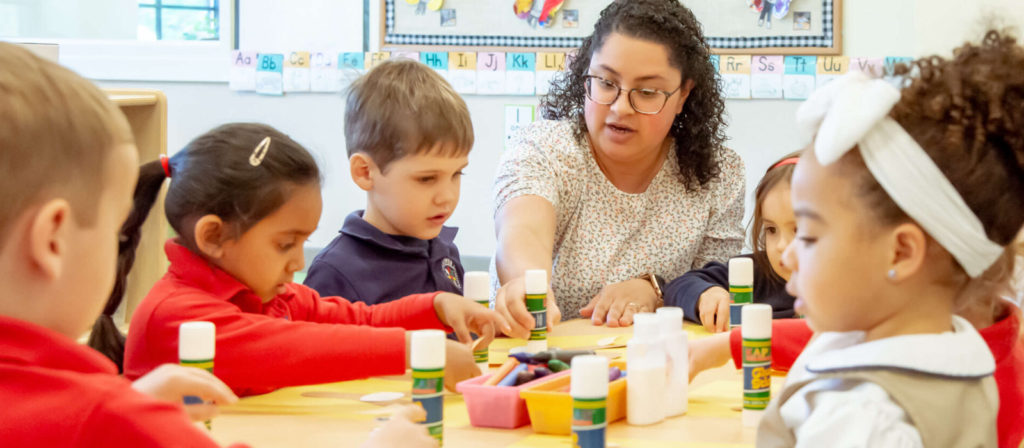
This section is divided into two phases:
- Introducing classroom jobs effectively
- Managing classroom jobs consistently over time
1. Introducing Preschool Classroom Jobs Effectively
Before preschool classroom jobs can function as part of your daily routine, they need to be introduced with structure, clarity, and developmental alignment. The goal in this phase is to help children understand the purpose of classroom roles, gain confidence in performing them, and gradually take ownership of their responsibilities.
Begin with Developmentally Appropriate Roles
Children between the ages of 3 and 6 learn best through concrete, hands-on experiences. Introduce jobs that are simple and meaningful, such as Line Leader, Snack Helper, or Light Monitor, before expanding to more complex roles like Calendar Keeper or Job Chart Manager. Starting with a small number of jobs (three to five) in the first few weeks allows children to focus and succeed.
Creating a Classroom Job Chart for Preschool
Young children are highly visual learners. A clear, well-positioned preschool classroom job chart helps students recognize their roles and track responsibilities. Incorporate photographs, icons, and student name cards to support pre-literacy development and self-recognition.
Display the chart at eye level, refer to it daily during meetings, and connect job responsibilities to specific times in the schedule. This turns the job chart into a functional teaching tool, not just a decorative display.
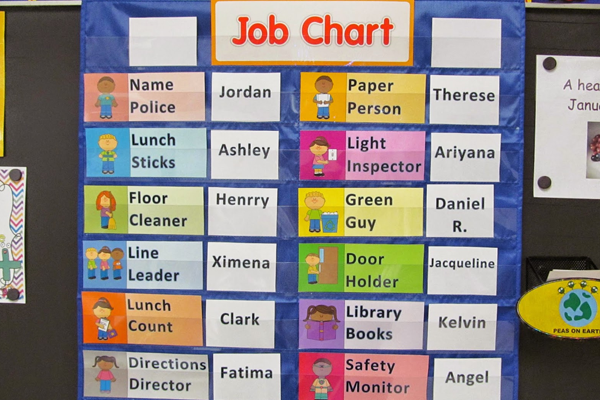
Model Roles with Repetition and Role-Play
Explicit instruction is critical. Demonstrate each classroom job step-by-step using real-life examples. For instance, show how a Door Holder stands back to keep the door open, or how the Plant Caretaker checks for dry soil before watering.
Role-playing allows children to practice in a low-pressure setting, helping them internalize job procedures. Integrate songs, stories, or puppets to reinforce the expectations in an age-appropriate way.
Involve Families to Extend Responsibility at Home
Preschool classroom jobs are most impactful when their value is reinforced beyond school. Communicate with parents about the job system, share weekly job assignments, and suggest similar responsibilities children can take on at home, like setting the table or feeding a pet.
When families mirror classroom expectations, children develop a more cohesive understanding of responsibility and routine.

Let the System Grow with Your Learners
As children develop more self-regulation, introduce new roles that require collaboration, leadership, and memory. Use student feedback to create or revise jobs. Let the system evolve to reflect classroom needs, transitioning it from a teacher-managed tool to a community-managed structure.
2. Managing and Rotating Classroom Jobs Consistently
Once preschool classroom jobs have been introduced, the challenge shifts to maintaining consistency and fairness. A poorly managed job system can lead to confusion or disinterest. The strategies below help ensure that classroom jobs continue to add value throughout the school year.
Establish a Consistent Rotation Schedule
Predictable routines are essential for preschoolers. Choose a consistent day to rotate jobs—typically Mondays. A weekly rotation ensures enough time for mastery without losing engagement. Make the schedule visible on the job chart or include it in your daily routine announcements.
Maintain a simple log of which students have held each job. This ensures equal opportunity and prevents unintentional repetition or neglect.
Keep the Job System Fair and Inclusive
All students should have access to every classroom job. Avoid assigning tasks based on personality or behavior. Instead, ensure that each role is rotated equitably, even the less glamorous ones. Emphasize that every job contributes to the classroom community, reinforcing the message that all roles are valuable.
Use a tracking sheet or checklist to verify that no student is skipped and that every role is cycled fairly.
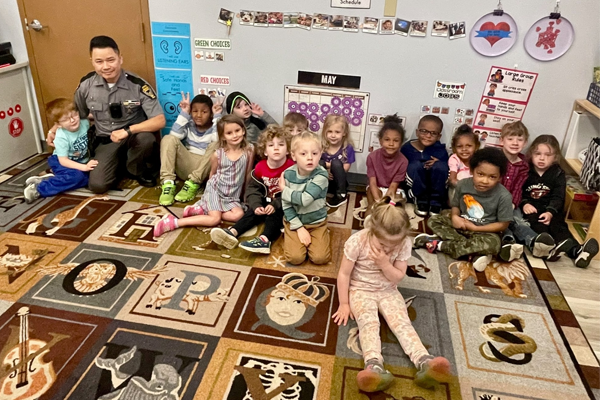
Plan for Absences and Transitions
Unexpected absences are common in early childhood settings. Build flexibility into your system by assigning a “Substitute Helper” each week or allowing volunteers to fill in temporarily. This keeps the system functioning and will enable students to take initiative when needed.
Prepare name cards or movable icons for easy adjustments. If using a digital system, ensure that updates can be made quickly and clearly.
Integrate Job Management Into Daily Routines
Preschool classroom jobs should not feel like an isolated task. They work best when embedded into the rhythm of the day. Refer to the job chart each morning, remind students of their functions at key transitions, and recognize job performance during closing circle or reflection time.
Reinforcement is key—praise specific actions (“I noticed our Pencil Monitor made sure all the trays were ready”) and celebrate collective success to encourage consistency.
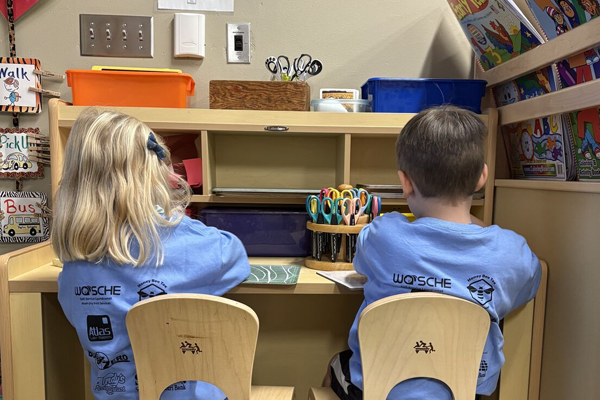
Use Technology if It Enhances Your Workflow
If your classroom is equipped with smartboards or tablets, consider using a digital classroom job chart. Tools like Google Slides, PowerPoint, or job chart apps can display roles, simplify updates, and involve students in interactive ways.
These tools also make it easier to share job assignments with families and streamline communication between teachers and aides.
พร้อมที่จะออกแบบพื้นที่ที่สร้างแรงบันดาลใจในการเรียนรู้หรือยัง ติดต่อเราเพื่อสร้างโซลูชันเฟอร์นิเจอร์ที่ปรับแต่งให้เหมาะกับความต้องการในห้องเรียนของคุณ
Strategies to Make Preschool Classroom Jobs More Engaging
Implementing preschool classroom jobs is not only about assigning tasks—it’s about making the experience meaningful, engaging, and developmentally appropriate. When job roles are designed with intention and creativity, children are more likely to participate enthusiastically and take pride in their contributions. Below are three proven strategies to make preschool classroom jobs more effective in real classroom settings.
Use Positive Reinforcement to Motivate Participation
One of the simplest ways to increase engagement with preschool classroom jobs is through consistent, age-appropriate rewards. Recognition doesn’t have to be elaborate—a sticker, a kind word, or a classroom “Job Star” certificate can go a long way. Children are more likely to complete their classroom jobs responsibly when their efforts are noticed and appreciated. A visible reward chart linked to the preschool classroom job chart can help reinforce this behavior throughout the week.
Add Creativity to Job Roles and Titles
Creativity is a powerful tool in making preschool classroom jobs more attractive to young learners. Instead of sticking with generic names like “Table Cleaner” or “Line Leader,” consider titles like “Sanitizing Superhero” or “Adventure Guide.” Creative job names add personality and excitement to routine responsibilities. You can also rotate themed jobs—such as “Snowflake Counter” in winter or “Bug Watcher” in spring—to match classroom units or seasonal changes. This keeps the job system fresh and encourages continued interest.
Make Jobs Part of the Play-Based Learning Environment
To be truly effective, preschool classroom jobs should feel like a natural part of the child’s learning experience—not a chore. Integrate job responsibilities into classroom games, songs, and storytelling activities. For example, use a puppet to “assign” the daily jobs, or create a challenge-based cleanup routine with music. Turning classroom jobs into playful activities reinforces routines while maintaining a joyful, stress-free environment. This approach keeps children actively involved and increases their sense of ownership over the classroom space.
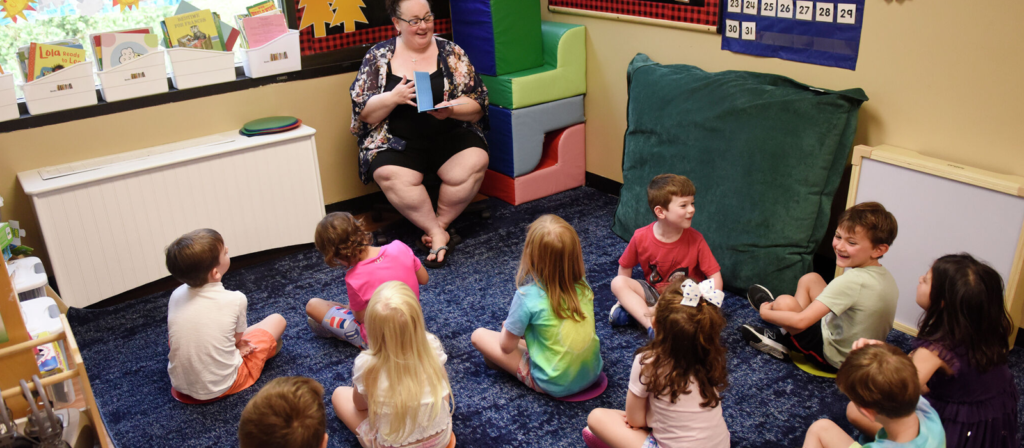
Common Products Used for Preschool Classroom Jobs
To make preschool classroom jobs effective and engaging, the right tools can make a big difference. Here are some commonly used items that support daily routines and child participation:
Classroom job chart, name tags, icon cards, dry-erase boards, cleaning sets, spray bottles, watering cans, pet care toys, book bins, tray kits, child-sized vacuum, clipboards, stickers, reward charts, helper badges, timers, and printable checklists.
- แผนภูมิงานในห้องเรียน
- Magnetic name tags
- Visual icon cards for job roles
- Dry-erase job board
- Laminated job tracking sheets
- Preschool job rotation calendar
- Kids’ cleaning set (broom, dustpan, mop)
- Microfiber cleaning cloths
- Child-sized spray bottles
- Mini watering can
- Pet care set (toy food bowls, brushes)
- Book organizer bins
- Tray and table setting kit
- Kids’ vacuum or carpet sweeper
- Clipboard for job assignments
- Reward stickers and stamps
- Helper of the day certificates
- Role badges with lanyards
- Countdown timers
- Printable job checklists
- Job chart incentive stickers
- Job completion tokens
- “Star helper” reward chart
- Puppet or toy to assign jobs playfully
- Job role hats or sashes
FAQ: Preschool Classroom Jobs
How to work with preschool children?
Use clear routines, visual aids, and simple language. Preschoolers respond well to structure and repetition, which makes preschool classroom jobs a powerful way to build independence and cooperation. Keep tasks short and achievable.
What is the role of a preschool teacher in the classroom?
A preschool teacher guides learning, models behavior, and creates a supportive environment. They manage and rotate preschool classroom jobs to promote responsibility, teamwork, and classroom order. Teachers also use jobs to observe developmental growth.
How to teach rules to preschoolers?
Teach rules through modeling, repetition, and real-life practice. Linking rules to classroom jobs (like Cleanup Helper or Line Leader) helps children internalize behavior expectations in a hands-on way. Reinforce consistently.
What if all kids want the same job?
Explain the rotation system using a preschool classroom job chart. Emphasize fairness and remind students that everyone gets a turn. You can also create similar roles to share popular responsibilities.
Conclusion: Empowering Young Learners Through Preschool Classroom Jobs
When thoughtfully implemented, preschool classroom jobs become more than routine—they are daily moments of purpose, responsibility, and pride for young children. From building social-emotional skills to strengthening executive function and cooperation, classroom jobs help create a learning environment where each child feels seen, capable, and connected. They teach children not just how to follow directions, but how to contribute meaningfully to a group—a foundational lesson that supports long-term academic and personal growth.
Creating this supportive and structured environment requires more than a good idea—it requires the right space, tools, and systems to bring it to life. That’s why educators rely not only on effective teaching strategies but also on well-designed physical environments that encourage independence and responsibility. Choosing เฟอร์นิเจอร์โรงเรียนอนุบาลคุณภาพสูง and layout solutions that support job stations, role displays, and collaborative routines can make all the difference. As part of this foundation, companies like เวสท์ชอร์เฟอร์นิเจอร์, which specialize in crafting safe, durable, and functional environments for early childhood settings, play a quiet but critical role in supporting the daily success of these classroom systems.
By combining intentional teaching with the right environment, preschool classroom jobs become a powerful tool, not only for managing routines but for shaping confident, compassionate, and capable young learners.





